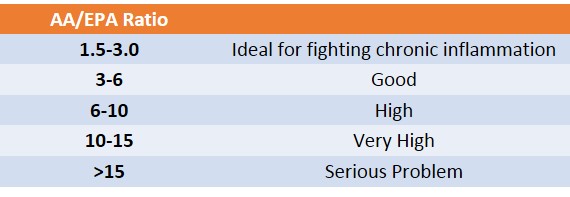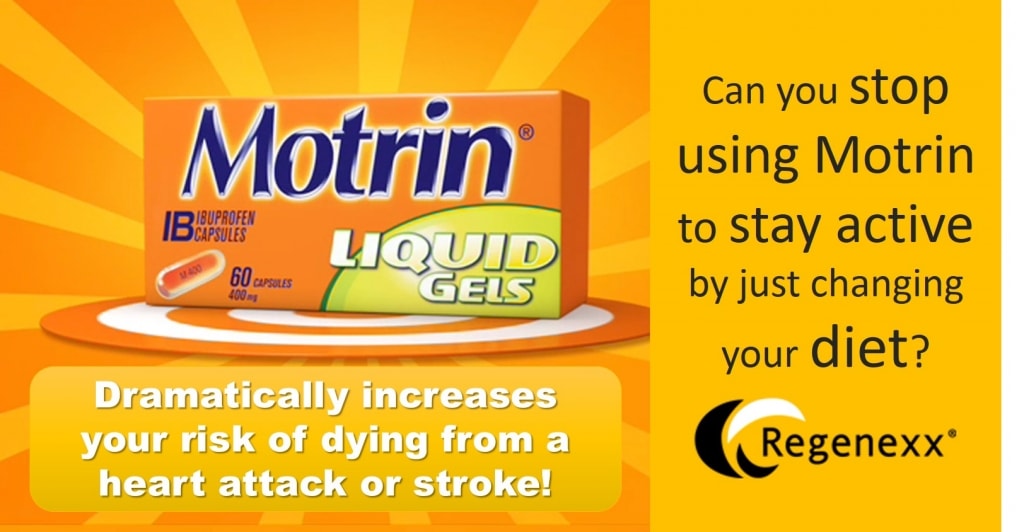Stopping Motrin? Some Simple Steps Can Help and May Just Save Your Life
Is stopping Motrin easy? I meet some patients who are addicted to Motrin or Aleve or other prescription NSAID drugs like Celebrex. If they literally stop taking these for a day or two, they’ll be disabled or in loads of pain. Why? What can you do if this is you?
First, why would you want to stop Motrin? It, like all of it’s chemical cousins in the non-steroidal anti-inflammatory drug class, poses serious health risks. These include a dramatic increased chance or dying from a sudden death heart attack, stroke, bleeding stomach ulcers, and other serious side effects.
Second, why do you need it in the first place? Inflammation means swelling or redness. Your body has two types of inflammation, acute and chronic. Acute inflammation is how we heal ourselves. For example, you sprain an ankle, it swells and gets red and heals. Your body brings healing cells to the area and tries to repair what was damaged. Chronic inflammation is different, it’s the silent killer that’s causes everything from heart disease to Alzheimer’s to why you’re unable to wean yourself off Motrin.
From a dietary standpoint, the modern American diet is an inflammation nightmare. This can be linked to increased omega-6 fatty acid consumption, high glycemic carbs, lower omega 3s in our diet, and less polyphenols. What type of foods are stoking this pro-inflammatory fire?
The omega-6 fatty acids that are found in cheap oils used in mass manufactured food are a big culprit. Our diet has changed radically in this regard since the turn of the 19th century. For example, the amount of soy oil consumed has increased a thousand fold. Soy bean oil, canola oil, corn oil, safflower oil, and sunflower oil are all rich in Omega-6 fatty acids. These oils (but not olive oil or coconut oil), break down to a nasty pro-inflammatory chemical known as Arachidonic Acid (AA). From an inflammation standpoint, AA is like bringing gasoline to a bon fire.
High glycemic foods are another really bad item in the American diet. Food manufactures have found a way to dramatically increase the sugar in just about everything. Our daily sugar consumption has gone from about 5 grams in 1700 to 22 grams in 1800 to 112 grams in 1900. Today, half of Americans consume about 225 grams! Too much sugar causes too much insulin to be released, dramatically increasing inflammation and messing with things like cartilage maintenance on your joints.
Omega 3 fatty acids counteract the pro-inflammatory effect of omega-6 fatty acids. They used to be a big part of the American diet when most Americans were clustered near the coasts, as they can be found in fish and seafood. However, our omega 3 consumption as a country has dropped off a cliff as most of us would prefer a burger to seafood. In fact, one component of Omega 3s is very important in controlling inflammation. It’s called EPA. This long chain fatty acid can be made in your body by converting essential fatty acids, however, more of it can generally can be obtained through diet.
Polyphenols are what give our vegetables color. They are an important part of controlling inflammation through many different mechanisms. One common polyphenol is called resveratrol, which has been shown to help control blood sugar, activate a gene that helps to block arthritis, reduce inflammation, and reduce the effects of cellular aging. So the diet portion of getting off toxic anti-inflammatory drugs has the following components:
- Get rid of the nasty inflammatory oils in your life. Become a label reader and if you see soy bean oil, canola oil, corn oil, safflower oil, and sunflower oil-you can’t have this product. Butter, olive oil, or coconut oil are fine.
- Get rid of high glycemic foods. What do I mean by high glycemic? The white granular stuff plus bread, pasta, juice, super sweet fruits, etc. All of this produces too much insulin production, which combined with far too little activity, causes a metabolic syndrome. Consider going on a strict Atkins, Zone, or South Beach diet. These are all low glycemic diets-meaning that they can help control blood sugar and excessive insulin release. A quick test to see if you’ve beaten sugar addiction is what I call the chocolate bar test. Get a 70%, 80%, and 90% bar and taste them. If you try the 70% bar and feel its not sweet enough, go back to square 1, you’re a major sugar addict. If the 70% was sweet and the 80% was not sweet enough and very bitter, then you’re on your way, but not there yet-strict up the diet and cut more sugar. If you try the 80% and its a little sweet and the 90% tastes a little bitter, you’re about on track.
- Supplement the heck out of your Omega 3s! Most people I know who take Omega 3s go to Costco and buy some huge bottle of fish oil caps, pop two in the morning, and call it good. First, the brand really matters, so see the fish oil buying information at this link. Second, this is about 1/2 of the fish oil dose you need to control inflammation. How much should you take? One study found that Greenland Eskimos consumed on average 5,700 mg of Omega-3 EPA per day. So using this math, these Eskimos consume about the equivalent of 28 usual fish oil caps (8,400 mg of omega 3′s) per day (assuming a usual 2:1 ratio of EPA to DHA). I’d recommend this “Eskimo” dose. One way to cut down on all of those capsules is to find a brand of EPA/DHA purified fish oil. These can have as much as 600 mg or more of omega 3′s. So for a concentrate that has 600 mg of omega 3′s, this would means about 9-10 caps a day, or 3 with each meal per pill. A concrete example is a brand called Nordic Naturals that makes an EPA Xtra formulation with about 1,000 mg of EPA and 1,500 mg of omega 3′s per 2 capsules. Here, a 100-130 pound woman would start at 3 pills twice a day (6 pills per day or 3,000 mg total omega 3′s), a 130-180 pound person would take 4 pills twice a day (4,000 mg EPA) and someone larger would take more.
- Polyphenols are found in colored veggies, so consume at least 3-4 servings a day or more. You can also get them via supplements like resveratrol which is found in many supplements. Our Regenexx Stem Cell Support formula has this plus several anti-inflammatory polyphenols including curcumin and bitter melon.
How do you know if you have a pro-inflammatory diet problem and whether your body is a chronic inflammation time bomb? There’s actually a test we use which is the level of the pro-inflammatory AA mentioned above as a ratio to the anti-inflammatory EPA (also mentioned above). This test is not commonly performed outside of research, but it is available. Where should it be?

Using this metric is easy. Just get your blood tested and if the AA/EPA ratio is high, follow the advice above and retest until you’re in the good range. You should do this under the advice of a physician.
The upshot? You can get yourself off of Motrin, Celebrex, Aleve and other dangerous drugs by closely monitoring your AA/EPA ratio. Just follow the simple advice above after consulting with your doctor!
If you have questions or comments about this blog post, please email us at [email protected]
NOTE: This blog post provides general information to help the reader better understand regenerative medicine, musculoskeletal health, and related subjects. All content provided in this blog, website, or any linked materials, including text, graphics, images, patient profiles, outcomes, and information, are not intended and should not be considered or used as a substitute for medical advice, diagnosis, or treatment. Please always consult with a professional and certified healthcare provider to discuss if a treatment is right for you.
